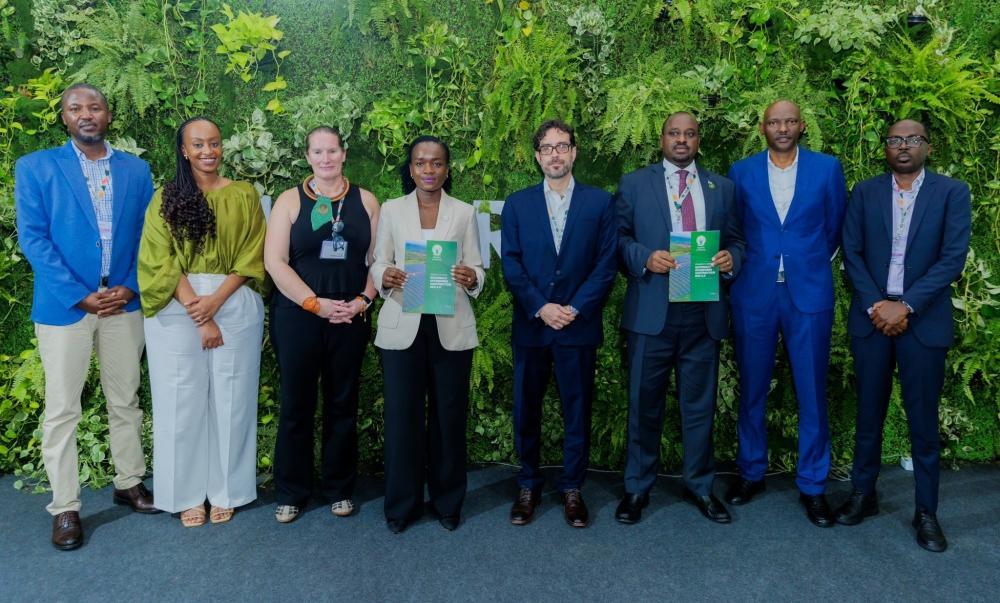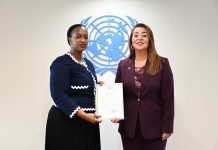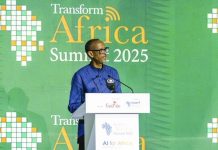Africa-Press – Rwanda. The government is set to launch the Biodiversity Finance Window on Thursday, November 13, during the ongoing 30th United Nations Climate Change Conference (COP30) in Belém, Brazil, the Rwanda Green Fund has announced.
The new facility which was established under the Rwanda Green Fund is designed to mobilise and channel both public and private finance towards biodiversity conservation, ecosystem restoration, and sustainable use of natural resources.
A boost to Rwanda’s biodiversity agenda
Biodiversity, which encompasses all plants, animals, microorganisms, and ecosystems, is declining globally at an alarming rate due to human activities such as deforestation, pollution, overexploitation, and climate change. Rwanda is not exempt from these pressures.
The launch of the Biodiversity Finance Window follows the government’s approval of the National Biodiversity Strategy and Action Plan (NBSAP), which will require an estimated Rwf399.8 billion between 2025 and 2030.
The strategy also calls for the creation of a National Biodiversity Fund (NBF), a legal and regulatory framework to guide how biodiversity conservation projects are financed and managed.
Environmental expert Aloysie Imanishimwe said the new Biodiversity Window fills a critical financing and implementation gap in Rwanda’s nature agenda.
“It creates a dedicated pipeline to turn Rwanda’s biodiversity strategy and NDC commitments into measurable, funded restoration and conservation projects. It also opens doors for private capital to flow into nature-positive investments,” she noted.
She added that launching the facility at COP30 is strategic for attracting new partners and pledges.
Closing the funding gap
According to Concorde Kubwimana, co-founder of the Save Environment Initiative, over 60 per cent of Rwanda’s conservation activities currently depend on external donors, a situation that leaves biodiversity efforts vulnerable.
“Rwanda’s mountain forests, wetlands, and savannahs face increasing threats from land degradation, habitat loss, and climate change. This fund will provide predictable resources to implement the national biodiversity strategy, restore ecosystems, empower communities, and align biodiversity with Vision 2050,” Kubwimana said.
Restoring biodiversity through reforestation and wetland rehabilitation also strengthens community resilience to climate impacts.
Linking biodiversity and climate adaptation
Rwanda’s Minister of Environment Bernadette Arakwiye reaffirmed the country’s commitment to integrating biodiversity and climate goals.
“Through our landscape restoration initiatives, Rwanda is restoring two million hectares of degraded land and has increased forest cover to 30 per cent. Kigali is also transforming five major wetlands into natural flood buffers and green spaces,” she said.
Rwanda’s Minister of Environment Bernadette Arakwiye during her presentation at the ongoing 30th United Nations Climate Change Conference (COP30) in Belém, Brazil. Courtesy
She added that these initiatives directly contribute to the Global Goal on Adaptation — a key commitment under the Paris Agreement to enhance resilience and reduce vulnerability to climate change.
Global support for forests
At COP30, a new Tropical Forests Forever Facility (TFFF) was also launched, securing more than $5 billion in global commitments. Rwanda expects to benefit from this mechanism, which rewards countries for conserving and expanding natural forests.
“We commend Brazil for putting forests at the centre of COP30, not just as carbon sinks but as living systems that sustain biodiversity and livelihoods,” Minister Arakwiye said.
Kubwimana added that the facility “sets a global standard for long-term forest conservation” and could help Rwanda scale up reforestation under its Green Growth and Climate Resilience Strategy.
Imanishimwe emphasised that a fair share of the funds should directly benefit forest stewards.
“At least 20 per cent of payments should go to Indigenous Peoples and local communities engaged in forest protection,” she said, noting that such incentives would expand Rwanda’s ability to invest in nature-based solutions.
By valuing ecosystem services and attracting blended finance, the new biodiversity window and global forest facility together signal a shift toward predictable, homegrown, and community-centred funding for nature and climate resilience.
For More News And Analysis About Rwanda Follow Africa-Press






